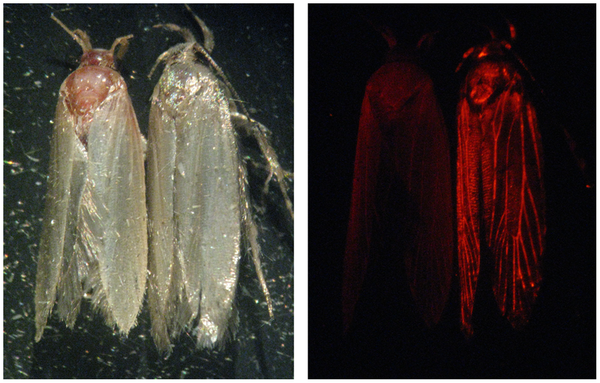Oxitec's novel genetic fluorescent marking technology can substantially improve control of the cotton pest moth, pink bollworm, according to findings of a new study.
Oxitec scientists, working in partnership with the US Department of Agriculture, have shown that using their genetic marker in sterilized pink bollworm could provide a means of tracking the progress of control efforts against the globally important pest. The sterile insect technique (SIT), which depends on the mass-release of sterilized male insects, has been used for decades to control this moth over 1 million acres of cotton in the United States. Today, billions of sterilized insects are released each week to enable species-specific, environmentally friendly pest control for a range of pests around the world.
To properly track the pest population during SIT treatment, sterile insects need to be clearly marked before release and this can be problematic and unreliable. In pink bollworm SIT, the dye used to mark moths can be difficult to see. Mistaken identity of a sterile as a wild moth can lead to unnecessary and expensive supplementary control efforts.

Photographs showing wild-type (left) and OX1138B (right) adult moths under bright field and DsRed2 excitation wavelength light, respectively. Credit: doi/10.1371/journal.pone.0038547.g001
Oxitec's solution is simple: by transforming the moth with a gene that produces a fluorescent protein, the moths are clearly marked.
The paper reports that the fluorescent gene allows easy visual identification of sterile insects, backed up by fast and 100% reliable molecular screening. These findings follow multiple years of field testing of the marked strain, the first open-field release of a genetically modified insect, which were published in the same journal in 2011 (Simmons and authors).
Oxitec are following this with the development of a more advanced strain that avoids the need for sterilisation by irradiation.
Citation: Walters M, Morrison NI, Claus J, Tang G, Phillips CE, et al. (2012) Field Longevity of a Fluorescent Protein Marker in an Engineered Strain of the Pink Bollworm, Pectinophora gossypiella (Saunders). PLoS ONE 7(6): e38547. doi:10.1371/journal.pone.0038547





Comments